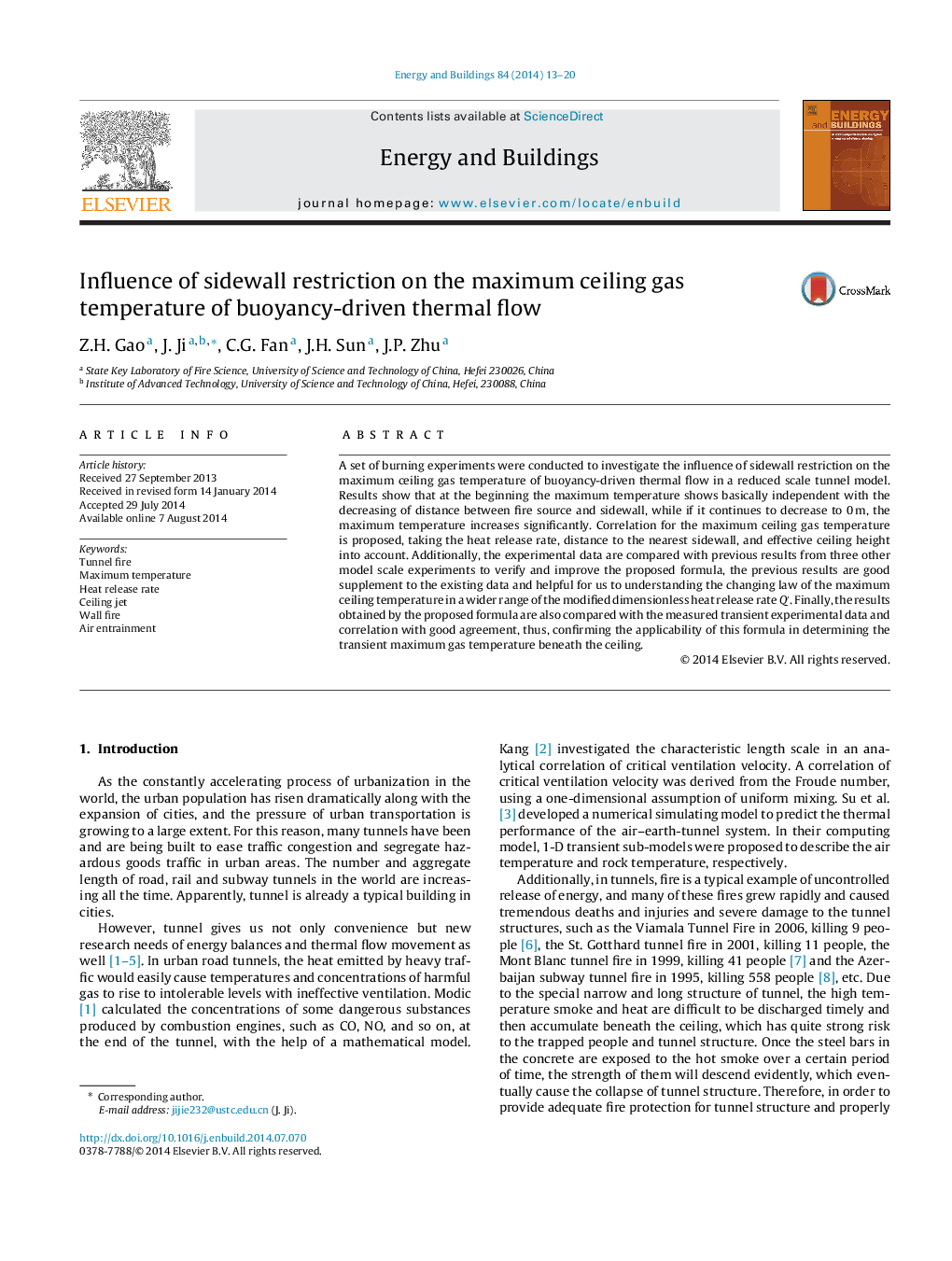| Article ID | Journal | Published Year | Pages | File Type |
|---|---|---|---|---|
| 262856 | Energy and Buildings | 2014 | 8 Pages |
•A set of burning experiments were conducted in a reduced scale tunnel model.•To provide adequate fire protection for tunnel structure and properly design the fire detectors.•The influence of sidewall restriction on the buoyancy-driven thermal flow is investigated.•A global correlation for the maximum ceiling excess gas temperature is proposed.•The applicability of the proposed formula has been estimated.
A set of burning experiments were conducted to investigate the influence of sidewall restriction on the maximum ceiling gas temperature of buoyancy-driven thermal flow in a reduced scale tunnel model. Results show that at the beginning the maximum temperature shows basically independent with the decreasing of distance between fire source and sidewall, while if it continues to decrease to 0 m, the maximum temperature increases significantly. Correlation for the maximum ceiling gas temperature is proposed, taking the heat release rate, distance to the nearest sidewall, and effective ceiling height into account. Additionally, the experimental data are compared with previous results from three other model scale experiments to verify and improve the proposed formula, the previous results are good supplement to the existing data and helpful for us to understanding the changing law of the maximum ceiling temperature in a wider range of the modified dimensionless heat release rate Q′. Finally, the results obtained by the proposed formula are also compared with the measured transient experimental data and correlation with good agreement, thus, confirming the applicability of this formula in determining the transient maximum gas temperature beneath the ceiling.
